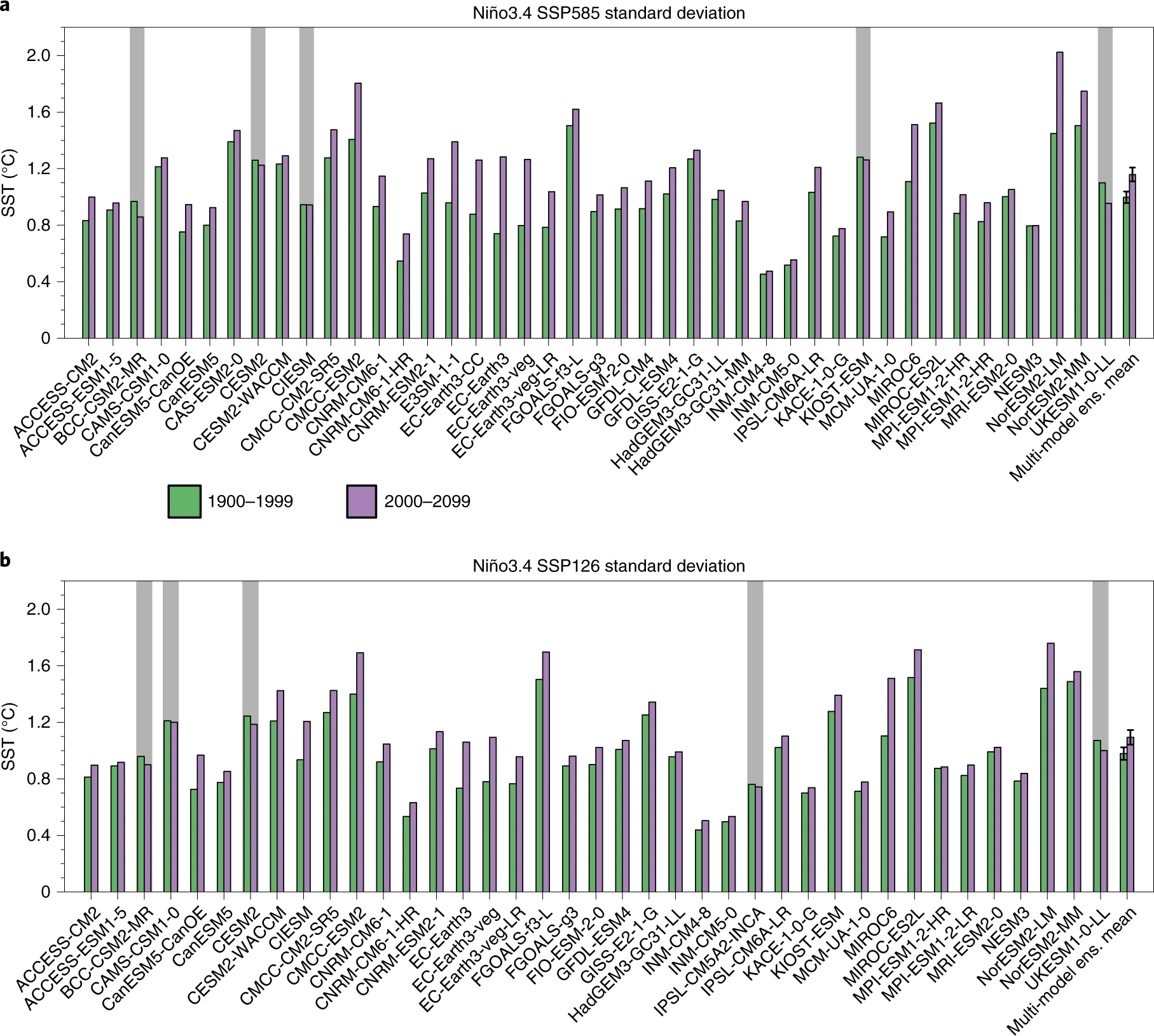Increased ENSO sea surface temperature variability under four IPCC emission scenarios
Wenju Cai, Benjamin Ng, Guojian Wang, Agus Santoso, Lixin Wu & Kai Yang
Published in Nature Climate Change, JAN 2022
Sea surface temperature (SST) variability of El Niño–Southern Oscillation (ENSO) underpins its global impact, and its future change is a long-standing science issue. In its sixth assessment, the IPCC reports no systematic change in ENSO SST variability under any emission scenarios considered. However, comparison between the 20th and 21st century shows a robust increase in century-long ENSO SST variability under four IPCC plausible emission scenarios.

a,b, ENSO Niño3.4 SST standard deviation (in oC) over the 20th century (1900–1999, green bars) and the 21st century (2000–2099, purple bars) from 43 available CMIP6 models under the SSP585 scenario (a), and from 39 CMIP6 models under the SSP126 scenario (b), with 88.4% and 87.2% of models respectively showing an increase in ENSO variability. The grey shading indicates models which do not simulate an increase. Also shown is the multi-model ensemble mean for each period. The error bars in the multi-model mean bars are defined as the value of the standard deviation of inter-model variability in the 20th and 21st centuries, determined by a Bootstrap test (see 'Bootstrap test' in Methods). The difference in the multi-model mean is statistically significant above the 95% confidence level.
Cai, W., Ng, B., Wang, G. et al. Increased ENSO sea surface temperature variability under four IPCC emission scenarios. Nat. Clim. Chang. (2022). https://doi.org/10.1038/s41558-022-01282-z